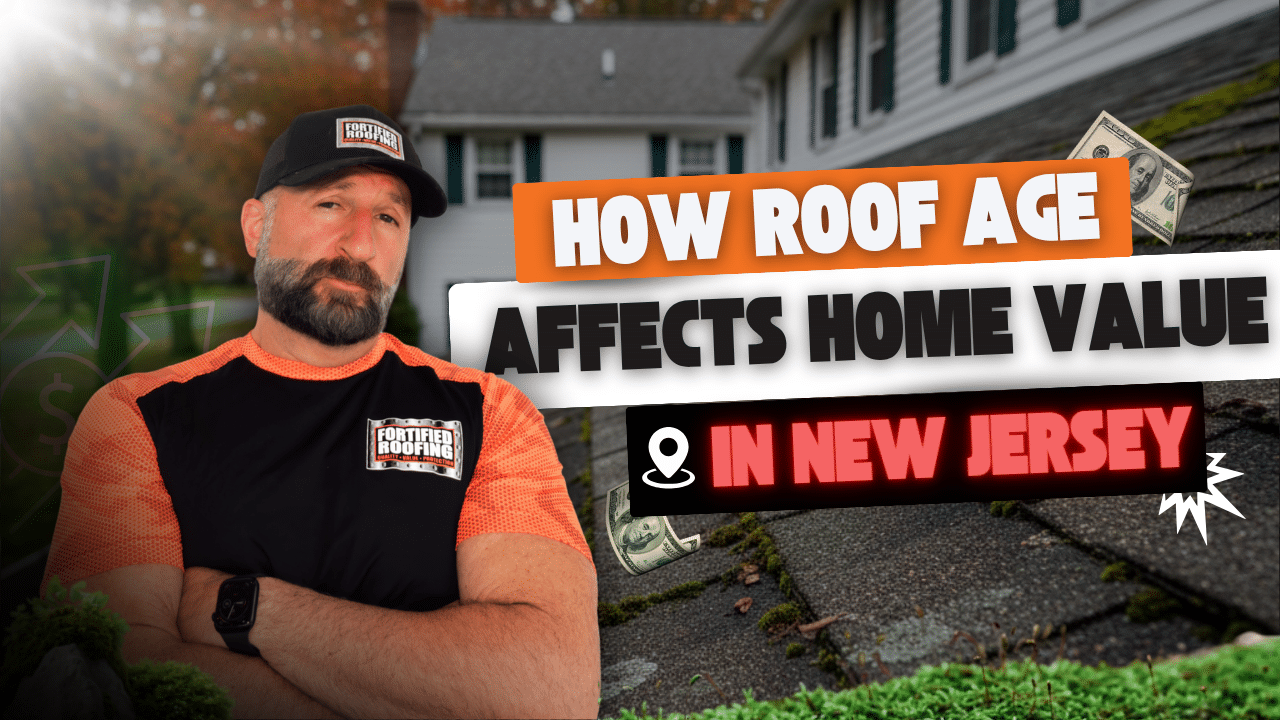
Why Roof Flashing Fails (and How to Spot It Before It Leaks)
09/02/2025
If your roof ever springs a leak, don’t go pointing fingers at your shingles. The culprit could very well be your flashing!
Roof flashing – that’s the thin metal installed where surfaces meet, like on your chimneys, skylights, and valleys – helps give that extra protection from wind-driven rain, ice, and coastal storms. When flashing fails, water finds the path of least resistance, such as into your attic, ceilings, and walls.
Fortified Roofing helps NJ homeowners like yourself with roof flashing repair, chimney flashing repair, and full roof leak repair every day. This is how flashing can fail, how to spot early warning signs, and what to do next.
What Causes Roof Flashing to Fail?
1) Age & Weathering
New Jersey sees intense sun, freeze-thaw cycles, and a nor’easter here and there. Over time, metal expands and contracts, sealants dry out, and nails back out, creating gaps prime for water intrusion.
2) Poor Installation
Incorrect step-flashing laps, missing counter flashing at chimneys, or nails driven too close to seams are common. Even high-quality materials leak if they’re installed incorrectly.
3) Incompatible Metals, Corrosion
Mixing copper, aluminum, galvanized steel, or using treated lumber against certain metals can speed up corrosion. Rusting sets in, and holes soon follow.
4) Sealant Fatigue
Sealants should back up metal, not replace it! If a joint relies on caulk alone, UV and movement will break it down.
5) Debris & Ice Dams
Clogged valleys and gutters trap water. In winter, ice dams push meltwater under shingles and flashing, especially around eaves and low-slope transitions.
Where Flashing Fails Most Often
- Chimneys. Step flashing (at the shingle courses) + counter flashing (cut into the masonry). Missing either of these is a leak waiting to happen.
- Skylights. Aging gaskets and brittle step flashing are frequent offenders.
- Roof Valleys. Valley flashing must be sized, lapped, and centered correctly, so debris here is risky.
- Vents & Pipes. Rubber boots crack, and metal bases can corrode or pull free.
- Drip Edge/Eaves. Missing or short drip edge allows water to wick behind the fascia.
Early Warning Signs
- Water stains on ceilings, especially after wind-driven rain
- Musty attic smell or damp insulation
- Rust streaks, staining, or visible gaps in metal around chimneys/skylights
- Curling, lifted, or missing shingles near walls or valleys
- Peeling paint or swollen drywall at upper walls/ceilings
Quick Rundown on Flashing Types, Locations & Red Flags
| Flashing Type | Common Location | What It Does | Early Red Flags |
| Step Flashing | Sidewalls, skylights | Seals each shingle course into the wall | Shingle edges lifting, exposed step pieces, debris buildup |
| Counter Flashing | Chimneys, masonry | Overlaps step flashing; sheds vertical water | Gaps at mortar joints, caulk-only “repairs,” loose metal |
| Apron Flashin | Base of chimneys, dormers | Protects where vertical meets horizontal plane | Water stains at lower chimney, rust at bends |
| Valley Flashing | Where two roof planes meet | Channels water down the valley | Leaves/granules collecting, pinholes/rust lines |
| Drip Edge | Eaves, rakes | Keeps water off fascia; prevents wicking | Rotting fascia, gutter overflow behind, missing pieces |
| Pipe/Boot Flashing | Plumbing vents | Seals around round penetrations | Cracked rubber, puddling around vent, stains below |
DIY Checks vs. Professional Repairs
You can conduct your own safe, ground-level inspection with the naked eye. For anything beyond simple observation – or if you suspect active leaking! – call a licensed New Jersey roofing company like Fortified Roofing.
| Situation | What You Can Do (Safely) | What a Pro Should Do |
| Minor staining after a big storm | Photograph stains; monitor for growth; check attic for damp insulation | Trace leak path; lift shingles carefully; re-lap or replace step/counter flashing; correct nail patterns |
| Suspected chimney leak | Look for cracked mortar, separated counter flashing | Grind reglet into mortar; install new counter flashing; re-point as needed; replace step flashing |
| Cracked pipe boot | Note age and cracks from ground/binoculars | Replace boot and base flashing; re-seal; ensure proper shingle integration |
| Debris in valley | Safely remove debris from the ground with a blower attachment if possible | Lift/relap valley flashing if compromised; install snow/ice shields or wider valley metal |
| Missing drip edge | Observe fascia rot or water marks | Install drip edge at correct angle; integrate underlayment and shingles; adjust gutters |
Safety note: Avoid walking on the roof yourself, especially when there are steep pitches, wet surfaces, or older shingles.
When Are Repairs Enough – and When Is Replacement Smarter?
- Repair makes sense if… the roof is relatively young, damage is localized (e.g., one chimney), and materials around the area are sound.
- Replacement is smarter if… flashing is corroded in multiple areas, installation was done wrong across the roof, or the roof is near end-of-life.
Fortified Roofing Has Over 20+ Years Experience Protecting New Jersey Families and Their Roof Flashing
If you’ve noticed stains, musty smells, or anything on the checklist above, book a FREE roof inspection with Fortified Roofing ASAP. Roof flashing repair, chimney flashing repair, skylight flashing, valley flashing, we do it all – and we do it right.
Contact us if you’ve spotted flashing problems. Reach out today for a fast, friendly inspection from a trusted NJ roofer!
